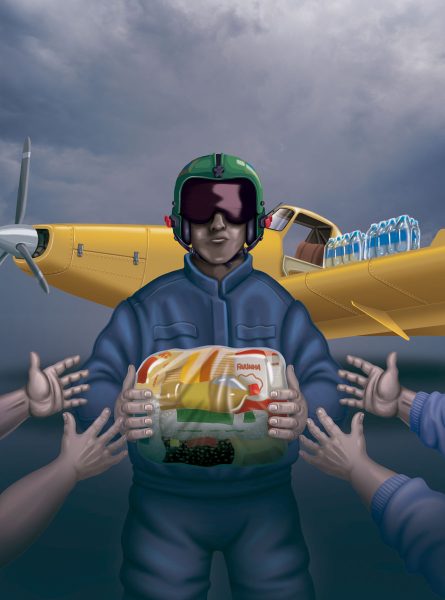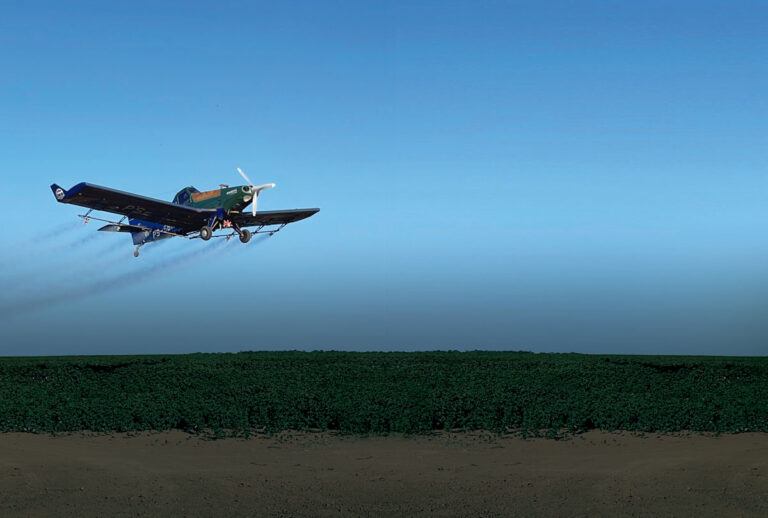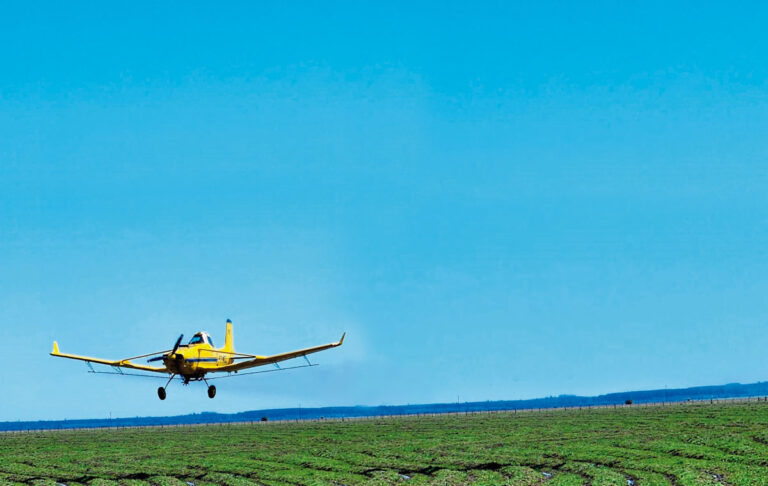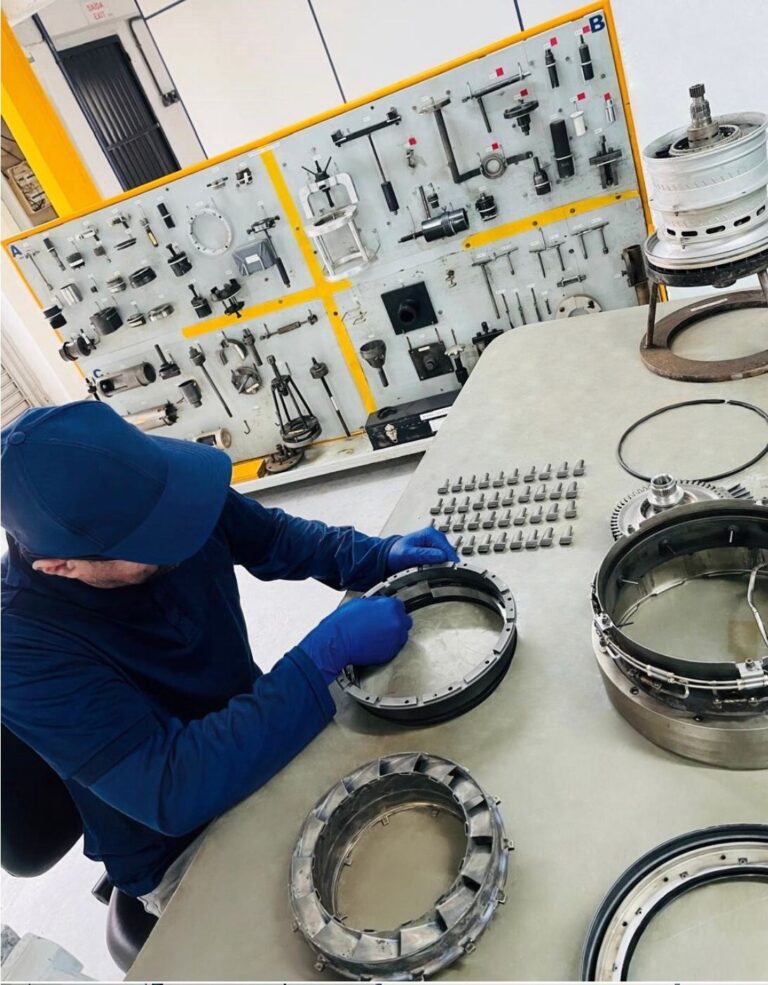“At 10 o’clock, I made the first reconnaissance flight of the system and scheduled to take supplies to the towns that had no access by land.” The words of agricultural pilot Eduardo Hentschke Schroeder refer to the morning of Monday, May 6, when he left the Terra Aviação Agrícola hangar in Cachoeira do Sul/RS for Santa Cruz do Sul/RS, from where he returned with 450 kilos of supplies, including basic food baskets, water and cleaning products. This is how agricultural aviation began transporting donations to the victims of the heavy rains in Rio Grande do Sul. The situation began with the first storm on April 27 and intensified in the first half of May, affecting more than 90% of the state’s municipalities.
The humanitarian mission coordinated by the Brazilian Agricultural Aviations Institute (Ibravag), with the support of the National Union of Agricultural Aviation Companies (Sindag), in response to the tragedy caused by the extreme weather event, brought together four aero-agricultural companies, which operated with their own fuel and fuel donated by partner companies and organizations. In addition to Terra, which donated two planes, DP Aviação provided three aircraft, Sepal Aviação Agrícola offered three and Nitz Aviação Agrícola added three. Eleven pilots also volunteered.
This action was directed by the State Civil Defense, which placed personnel in the hangar of Terra Aviação Agrícola to coordinate the distribution of donations picked up by aircraft in the Rio Pardo Valley. Initially, the supplies were destined for the towns of Candelária, Serro Branco, Novo Cabrais and Paraíso do Sul. Then there was a request for help from two districts of Cachoeira do Sul – Pequiri and Capané – which were isolated and could only be reached by plane. Later, the pilots were also sent to Doutor Ricardo, which is in the mountain region of Rio Grande do Sul. Eldorado and Charqueadas were also on the itinerary.
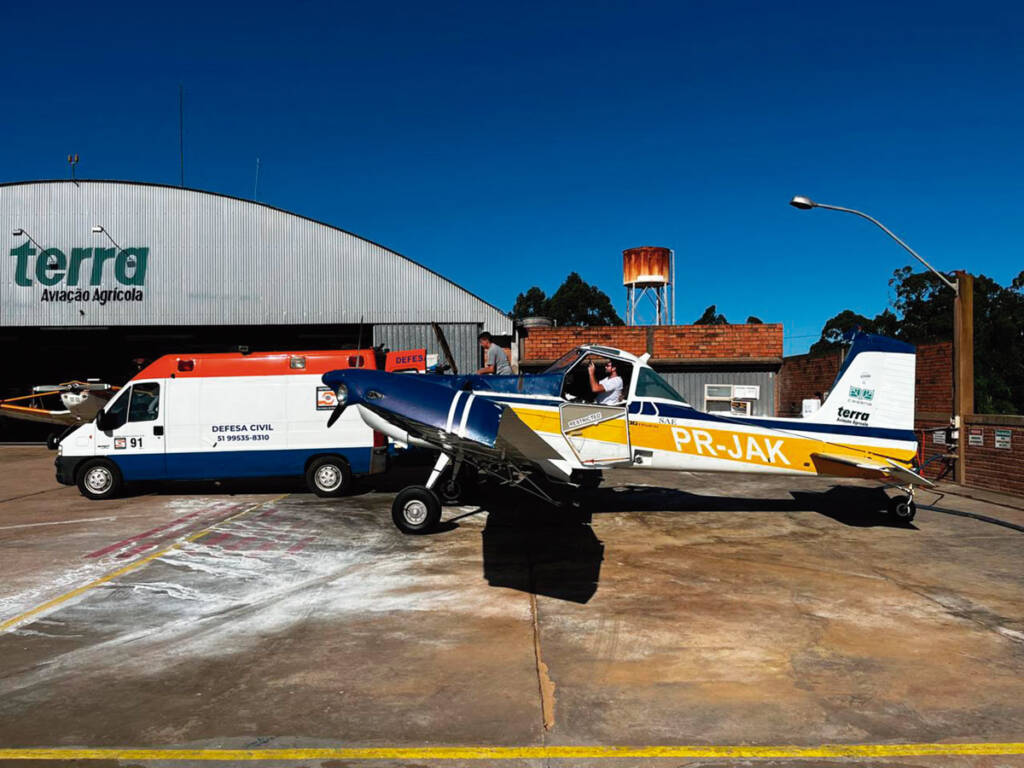
PROTOCOLS
The president of Ibravag, Júlio Augusto Kämpf, followed the entire process closely, helping to direct the planes. “We could have
done much more,” the head of the sector organization lamented. For him, it is necessary to have protocols that also include agricultural aviation in public policies aimed at civil defense. As an example, he cites firefighting with aircraft, which has had an operational protocol for decades.
“Civil Defense received this action from agricultural aviation as a new initiative,” said Kämpf. He also pointed out that the sector can directly help populations, such as in the fight against the dengue mosquito vector. This is a protocol that Ibravag and Sindag have been calling for for several years.
Dozens of operators were left on stand-by
The action, which was quickly put together, had Ibravag board member Francisco Dias da Silva, Kiko, a partner in KL Aviação Agrícola, as the link between the agricultural organization and Civil Defense. The request to set up the operation with agricultural aircraft came from Rio Grande do Sul’s Secretary for Economic Development (Sedec), Ernani Polo. With the green light, the sector was directed to the Santa Cruz do Sul headquarters, which was coordinated by the vice governor, Gabriel Souza.
With humanitarian aid from the aviation sector authorized by the National Civil Aviation Agency (Anac), the companies closest to Santa Cruz do Sul – Cachoeira do Sul, São Sepé and Pantano Grande – were called in. “But there were dozens of other operators on stand-by to help. It was a huge mobilization,” said Dias da Silva.
“The idea was to activate aero-agricultural operators from all over the state, but they soon started to clear the roads and we were no longer in demand,” says the Ibravag board member. The businessman also highlights the contribution of two operators – KNA/Nativa Aviação Agrícola, owned by Wilson Paulo Klauck and Wilson Paulo Klauck Junior (Santo Augusto), and Aereals Aviação Agrícola, owned by Gelson Luiz Klauck and Edson Antonio Klauck (Ijuí). They didn’t take part in Ibravag’s action, but their directors deployed three executive planes to take donations from the northwest of the state to the city of Porto Alegre and region. They even helped transport rescuers.
Mobilization for more than 80 flights and more than 30 tons transported

Neves in one of many of his missions, waiting for the plane to be unloaded
The mobilization extended to agricultural aviation partners. To keep the operation going, Sindag and Ibravag started the Agricultural Aviation for Rio Grande do Sul – SOS 2024 campaign, to raise funds to buy fuel for the aircraft involved in the operations, which carried out more than 80 flights and transported more than 30 tons of supplies.
And help arrived. FS, a corn ethanol producer, donated 39,000 liters of fuel for the operation. The National Association of Private Aeroagricultural Companies of Uruguay (Anepa) and the Argentine Federation of Aeroagricultural Chambers (Fearca) provided 10,000 liters of fuel to be used in the operations.
The presidents of the neighboring countries’ organizations, Walter Malfato (Fearca) and Lionel Rossi (Anepa), also signed a Note of Collaboration with Ibravag and Sindag for the air operations to bring supplies to the flooded cities. The following is part of the text: “With the determination to remain attentive and busy reinforcing the tasks of solidarity that are being developed in the face of this catastrophe and its possible consequences (…), emphasizing once again the importance and relevance of agricultural aviation in our region, ratifying our commitment to address situations for which we are requested.”
The Brazilian Sugarcane and Bioenergy Industry Association (Unica) also offered fuel to the operators, but it was never used. It was therefore returned to the organization.
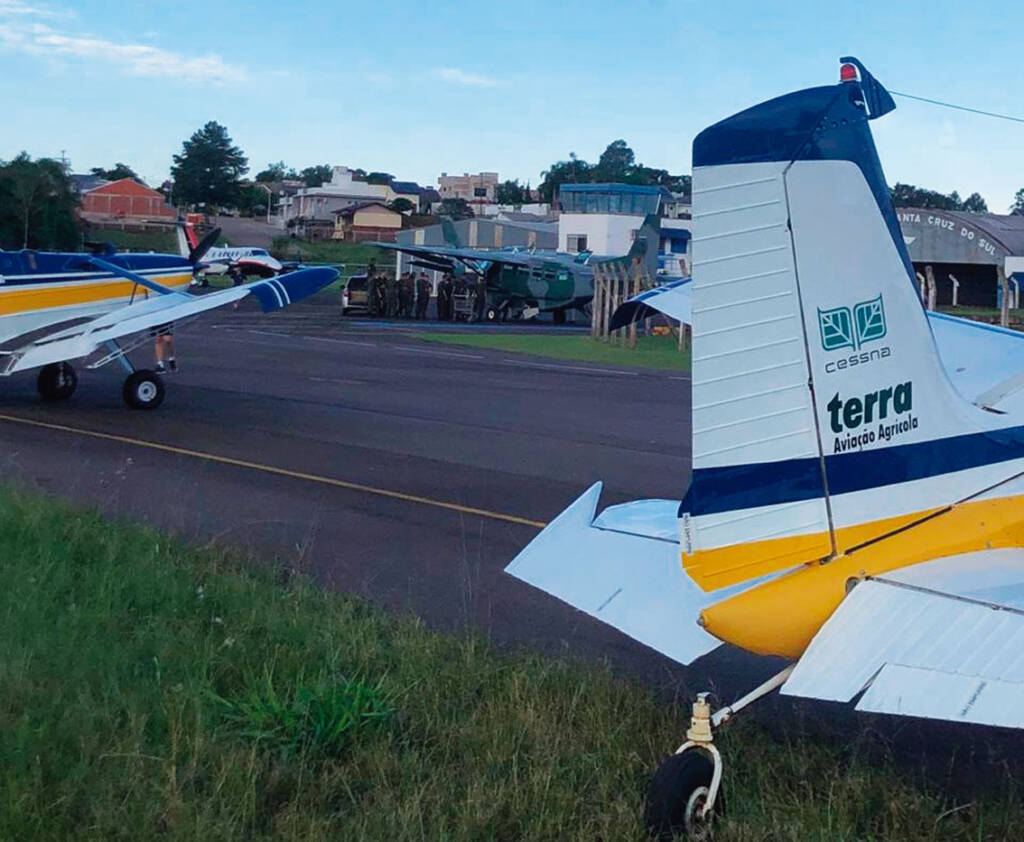
Terra’s hangar was the base for the operation, receiving products collected in Santa Cruz do Sul and distributing them to communities in need.
Attending to the hospital in Cachoeira do Sul was among the missions
DP Aviação, based in Cachoeira do Sul, worked on three fronts. Before Ibravag’s humanitarian mission began, the operator was already taking part in the Wings of Solidarity project, which is based in Santa Catarina. The task force, made up of businesspeople and farmers from all over Brazil, brought together executive planes and helicopters to bring donations to Rio Grande do Sul, including making deliveries and helping with rescues. DP also embraced the Hospital de Caridade e Beneficência (HCB) in Cachoeira do Sul, bringing medicines and transporting people in a small company aircraft.
“We were even able to arrange, through the Santa Maria Air Base, for the Air Force to transport oxygen to the hospital,” says the director of DP Aviation, Rodrigo Almansa. The highly flammable product could not be transported by agricultural aircraft. However, explained the businessman, as Caridade is a reference in cancer treatment and hemodialysis, and is much sought after by residents of the surrounding towns, it was extremely important to take the oxygen, which was running out.
BALANCE
For all its operations, DP provided three aircraft – two Cessna (an AgTruck and an AgWagon) and an RV-6 (small two-seater plane plus luggage rack). At the controls were agricultural pilots Ricardo Pires Neves, Felipe Almeida and Rogério Possebon. This time, they would take off and land with a full hopper. “This dynamic is different from day-to-day farming,” says Almansa, pointing out that the balance of these aircraft is to take off with weight and land empty.
Regardless of the need to find a new balance for the planes, the mission was successfully accomplished, but the memory of a state devastated by the waters remains. “I’ve never seen anything like it. In the Taquari Valley, it seemed as if the cities had been swept away,” recalls Commander Neves, who will be completing 30 years of harvesting next year. As well as traveling with agricultural aircraft to collect supplies, including medicines, as part of Ibravag’s mission, he made three flights to Porto Alegre in an RV-6, with a luggage compartment full of hospital parcels.
Solidarity moved volunteers
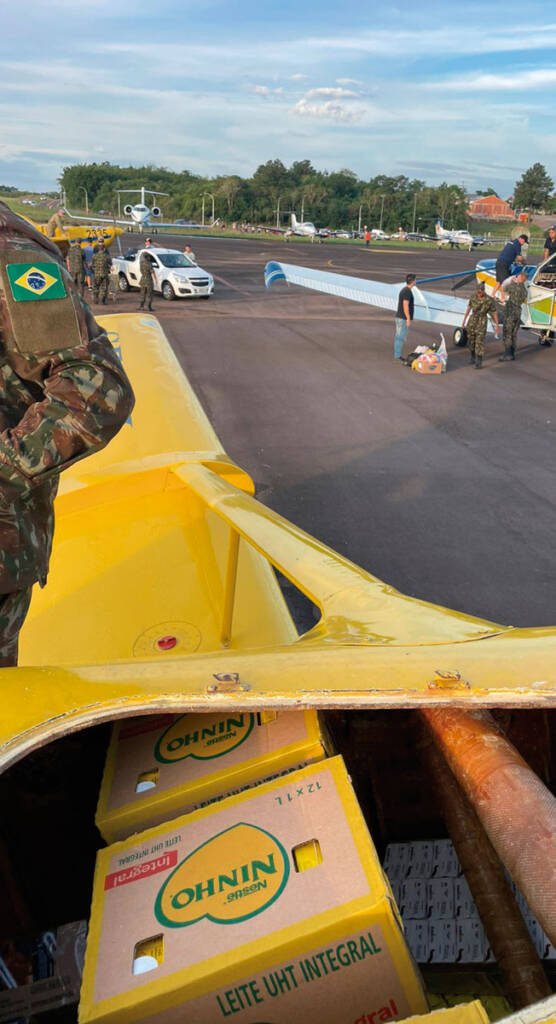
Aeroagrícola de São Sepé flew 25 hours to transport supplies.
Photo: Sepal Aviação Agrícola
Based in Pantano Grande, Nitz Aviação Agrícola also responded to Ibravag’s request and went to the front line to help supply the cities of Eldorado do Sul, one of the worst hit by the storm, and Charqueadas, which was also without access by land. The company’s partner and agricultural pilot, Batista Coelho Longarai, says that he put three aircraft – two Cessna AgTruck and an Ipanema – at the disposal of the humanitarian mission. The pilots – Gustavo Plautz de Matos, Jonatas Sales and Maurício Conze – also joined the volunteer operation.
Another aero-agricultural company that also provided assistance to the victims of the heavy rains was Sepal Aviação Agrícola. The company, based in São Sepé, enlisted the support of three agricultural pilots, Uillian Dias Martins, Matheus Tolotti and Flademir Pistoia dos Santos (Alemão Sepal), who volunteered to help with the humanitarian mission coordinated by Ibravag.
So it flew three Cessna AgTruck aircraft. In total, Sepal clocked up 25 hours of flying time, although it started with one plane and increased to two and then three over the course of the operation. Sepal’s director, Mário Rodolfo Textor, says that flying the aircraft was a matter of solidarity. “These people were all trapped, without access to medicine or food, unable to meet their basic needs, there was a lot of water, it was very sad,” the businessman said.
And the way to help was to release the planes, which are easy to operate and can land and take off on any road, even in the countryside. “That’s when this idea came up, together with the Ibravag team,” he explains.
“We carried everything”
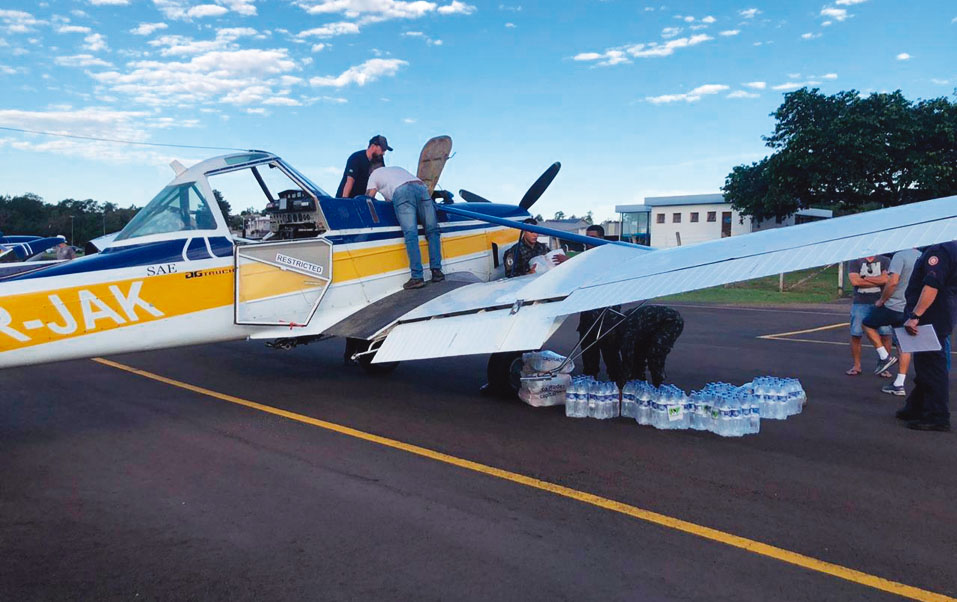
Agricultural aircraft transported everything from food and water to cleaning products and medicines
Photo: Castor Becker Júnior/C5 NewsPress
Agricultural pilot Eduardo Hentschke Schroeder, a partner in Terra Aviação Agrícola, was one of those who flew to pick up and deliver supplies. The agricultural company flew two Cessna AgTruck and three pilots to meet the demand. In addition to the commander, Caio Henrique Kämpf took part in the operation. “We carried everything. From food, water, diapers and medicines to chemotherapy and hemodialysis materials,” says the commander. According to him, he even made six flights full of hemodialysis material to the hospital in Cachoeira do Sul.
Schroeder recalls that blood was even transported on the aircraft in a Styrofoam container. This delivery arrived at Terra’s base by helicopter from Santa Maria, destined for Porto Alegre. From Cachoeira do Sul, DP Aviação personnel took them to Santa Cruz do Sul and from the Outpost they flew by helicopter to the state capital.
The 42-year-old pilot says he’s never seen anything like it. “When we arrived somewhere, it was very sad to see the despair on people’s faces, and at the same time how grateful they were to receive the donations,” he says.
Comic book to immortalize the pilots’ actions in RS
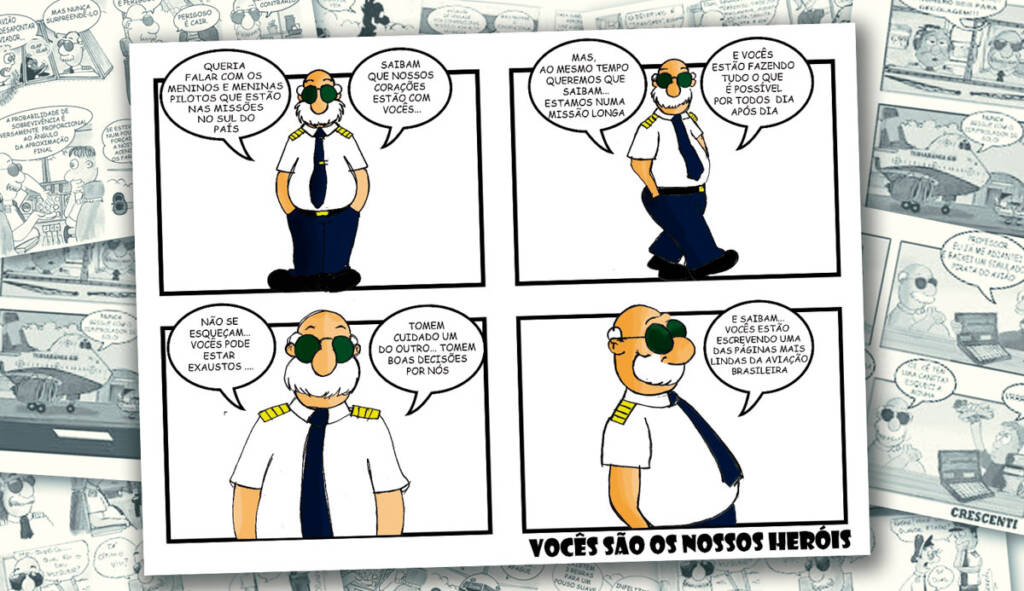
Crescenti makes an alert about the tiredness and asks for the pilots to take care of each other.
Image: Galeria Crescenti
The pilots were the great heroes who went where no one else could. Whether they were agricultural or not, the commanders had direct contact with the suffering communities, and their willingness to help did not go unnoticed by comic book artist Fernando Crescenti, who knows first-hand the task of flying an airplane safely. There was even a cartoon warning the pilots who were on a mission in southern Brazil to take care of each other.
Thirty years as a commercial pilot and currently an executive pilot, Crescenti has been drawing comics since he was a child, but started drawing professionally more than ten years ago to supply the Crescenti Gallery. A fan of the great comic artists of the 1990s, he highlights Laerte, Glauco and Angeli. “They were the great influencers of my production,” he reveals. His work has already been published in several newspapers in Brazil and some in Germany. His stories can also be seen in book form. In August, he will launch his fourth publication, called Diário de Bordo 3 – With the fantastic tips of Commander Badanha!
Partners contributed with donations
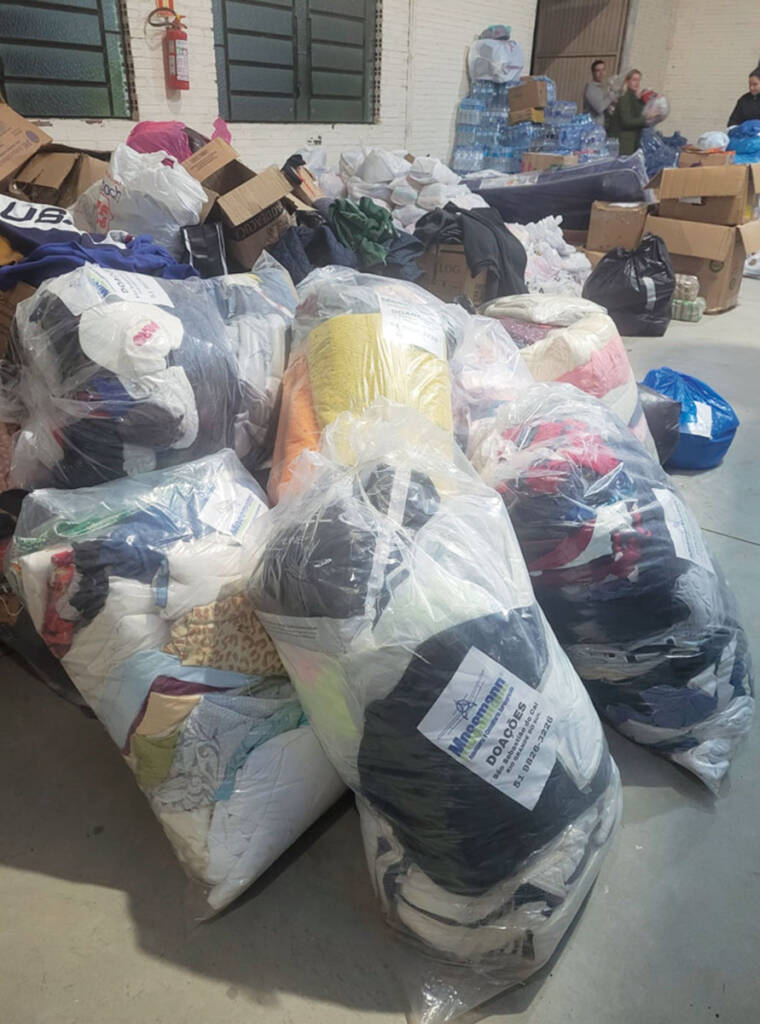
The company from Mato Grosso do Sul collected clothes, food and other products to send to the victims of the rains in Rio Grande do Sul.
Other companies linked to agricultural aviation also contributed by sending donations to Rio Grande do Sul. One example was Mossmann Assessoria e Consultoria Aeroagrícola, based in Mato Grosso do Sul, which mobilized its partners to collect clothes and food, including animal food and personal hygiene products. Among the people who contributed were clients, companies, the CTG Dourados, motorcycle clubs in the city and even the Antônio João Town Office, a town in the Dourados micro-region. The delivery was made to the town of São Sebastião do Caí.

